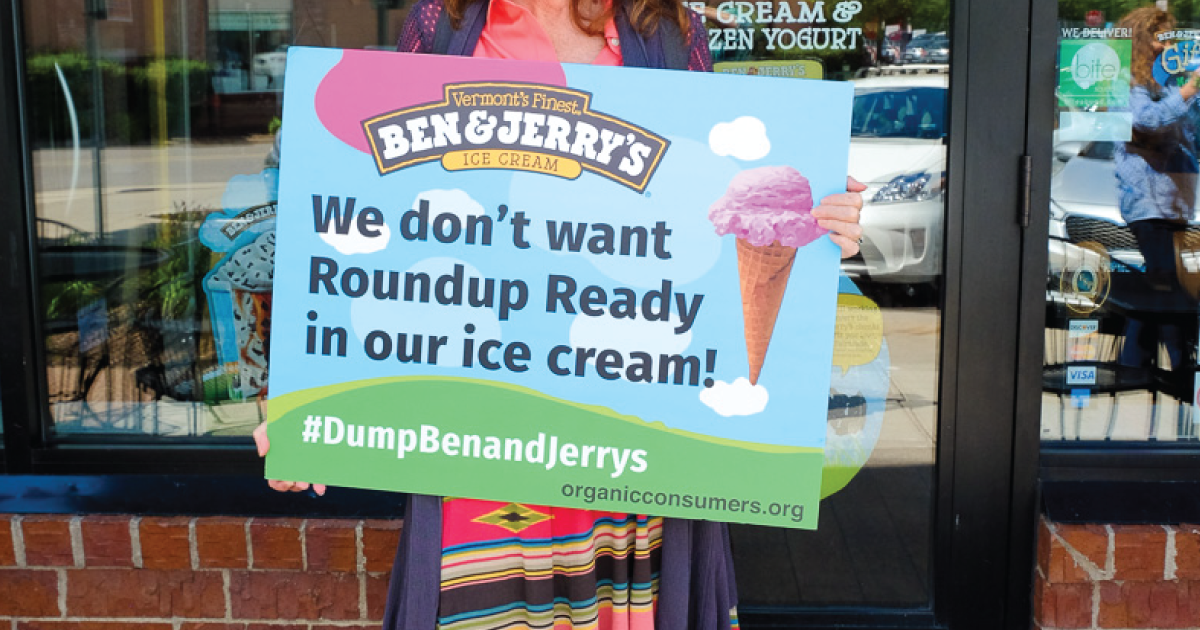
Ben & Jerry’s Loses the Legal Battle for Misinforming Consumers
Ice cream giant Ben & Jerry's' efforts to dismiss a lawsuit brought against it by the Organic Consumers Association (OCA) has been rejected. The District of Columbia Superior Court ruled that the suit, which alleges Ben & Jerry's used "smoke and mirrors" marketing aimed at covering up the true sources of its dirty dairy, will move forward.
January 22, 2019 | Source: Mercola.com | by Dr. Joseph Mercola
Ice cream giant Ben & Jerry’s’ efforts to dismiss a lawsuit brought against it by the Organic Consumers Association (OCA) has been rejected. The District of Columbia Superior Court ruled that the suit, which alleges Ben & Jerry’s used “smoke and mirrors” marketing aimed at covering up the true sources of its dirty dairy, will move forward.
Ben & Jerry’s is the fourth top-selling ice cream brand in the world, and thanks to its acquisition by Unilever in 2000, has tripled its sales over the last decade and a half, reaching $1.23 billion in sales in 2016.1
Despite its prolific growth, it’s still viewed by many as a socially responsible, environmentally friendly company — an image it has carefully crafted and worked to maintain, including via social media campaigns targeting young adults.
However, instead of being a true champion for the environment, Ben & Jerry’s continues to source its milk largely from concentrated animal feeding operations(CAFOs), betraying both the environment and their customers’ trust.
Judge Rules Against Ben & Jerry’s, Allows Lawsuit to Move Ahead
Ben & Jerry’s promotes its ice cream as made from milk from “happy cows” supported by its “Caring Dairy” program, a set of standards for cow care, planet stewardship and farmworkers that are supposed to go beyond the CAFO status quo. According to Ben & Jerry’s:2
“Caring Dairy offers our farmers a program for evaluating, implementing and continuously improving sustainable agricultural practices on their farms. Our belief is that the future of dairy farming is to build soil health that includes increased cover crops, alternative tilling practices, rotational crops and grazing techniques.
We also believe that high quality animal care is fundamental to the success of a farm, a well-cared for cow will produce a higher quality milk. And of course the importance of labor that supports the entire farm, from the farmer to the farmworker.”
It sounds good in theory, and looks good in print, but the reality is not so pretty. According to OCA, Ben & Jerry’s sources its milk and cream from a cooperative in St. Albans City, Vermont. About 360 farms deliver dairy to the co-op, and fewer than 25 percent of them actually meet the Caring Dairy standards.
Further, all the milk at the co-op is mixed together, so Ben & Jerry’s receives a mixed vat of Caring Dairy and, primarily, CAFO milk. “[E]ven if some of the milk comes from a farm that actually meets those standards, Ben & Jerry’s can’t truthfully claim that all of their milk and cream come from dairies that meet the company’s ‘Caring Dairy’ standards,” OCA noted.3
Indeed, and the judge agreed. While Ben & Jerry’s filed a motion to have OCA’s deceptive labeling and marketing lawsuit dismissed, Judge Neal Kravitz stated that the allegations were sufficient to advance a claim that consumers could be misled by Ben & Jerry’s’ labeling and marketing.
“A reasonable consumer could plausibly interpret Ben & Jerry’s’ labeling and marketing as affirmatively (and inaccurately) communicating that the company’s ice cream products are sourced exclusively from Caring Dairies and/or other humane source,” he wrote.4
Consumers Could Be Misled About Glyphosate in Ben & Jerry’s
In their suit, OCA also claimed that Ben & Jerry’s’ marketing could lead consumers to assume that the ice cream contained no harmful chemicals, such as the herbicide glyphosate.
Kravitz agreed, noting, “The court concludes that the facts alleged in the complaint are sufficient to support a plausible claim that consumers would be misled by Ben & Jerry’s’ statements into believing the company’s ice cream products contain no traces of chemicals like glyphosate.”5
For all their talk about sustainable agricultural practices, if you look at Ben & Jerry’s’ ice cream labels, you’ll notice that they don’t mention organic. As such, pesticide usage is fair game and residues are par for the course.
In July 2017, OCA reported that 10 of 11 samples of Ben & Jerry’s ice cream they tested came back positive for glyphosate, the active ingredient in Monsanto’s Roundup herbicide, and/or its main metabolite AMPA.6 The fan favorites Phish Food, Half Baked and Americone Dream are just a few examples found to contain glyphosate or its metabolites.
Also in 2017, OCA called on Ben & Jerry’s to immediately transition to using only organic ingredients, including milk, “or face a national and international consumer boycott.” Ben & Jerry’s responded by stating their products are safe to eat and contain only trace levels below those allowed by regulatory standards.
However, daily exposure to even ultra-low levels of glyphosate for two years led to nonalcoholic fatty liver disease (NAFLD) in rats in one study.7 After being forced into the negative publicity spotlight, Ben & Jerry’s released a “vision of sustainable agriculture,” with claims that they would stop using ingredients made with crops chemically dried using glyphosate by 2020, which only applies to their nondairy ingredients.
They also claimed that they would come out with a new product line in 2018 that would include organic dairy in the base mix, slated to represent up to 6 percent of total U.S. sales.8 Unfortunately, it seems they have no intention of sourcing the bulk of their dairy from organic sources in the near future, although they did roll out a small selection of light ice cream made with organic milk and cream.
As it stands, however, Ben & Jerry’s is contributing to the many problems caused by industrialized agriculture, including getting dairy from farms that are polluting Lake Champlain and Lake Carmi in Vermont’s Franklin County, the suit alleges.
